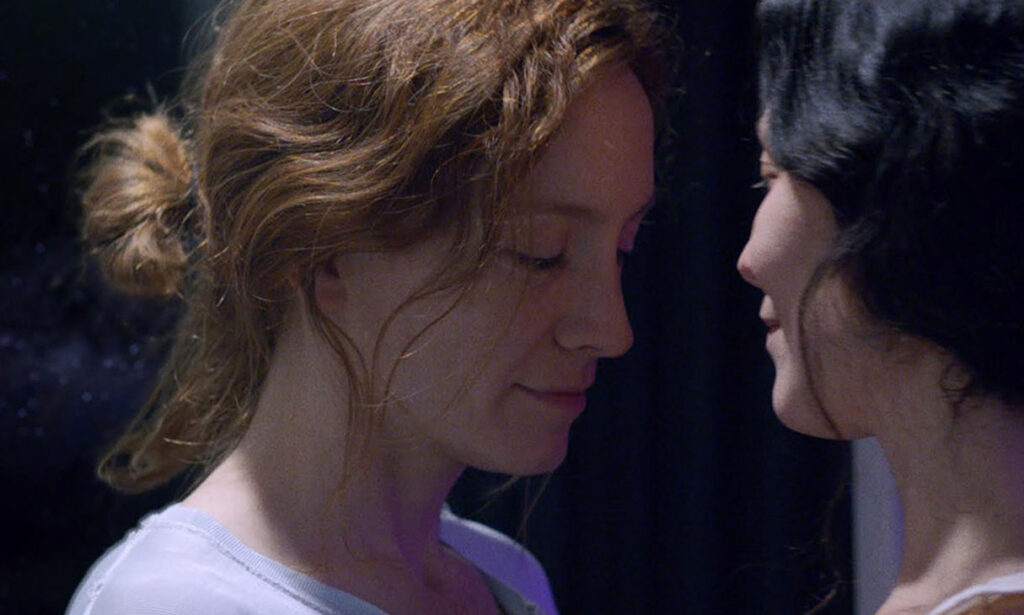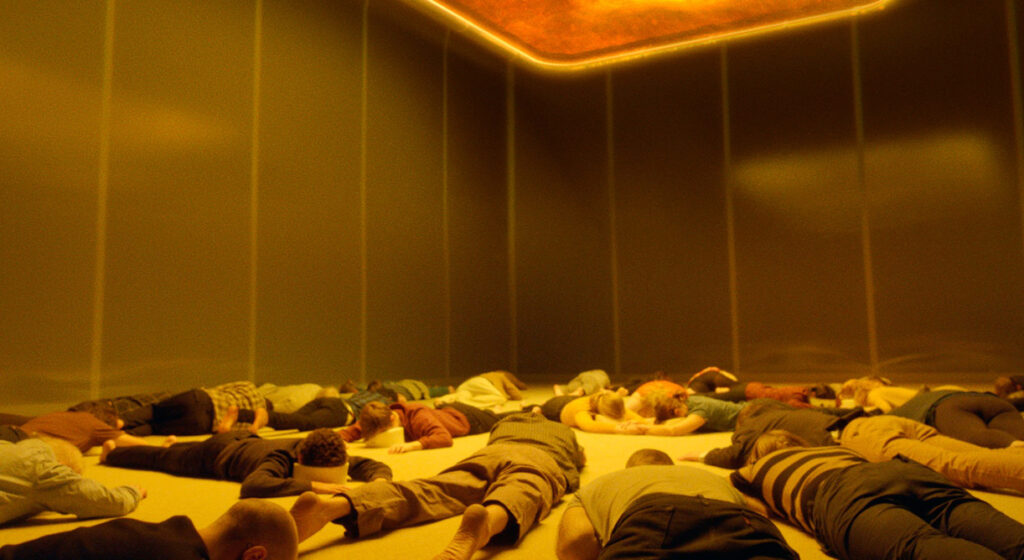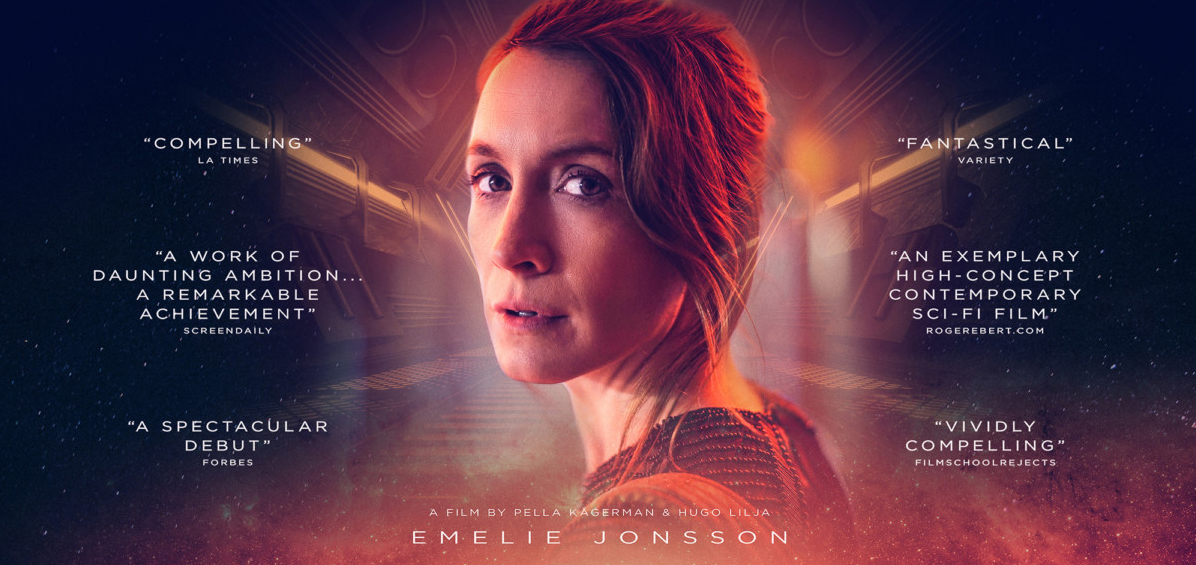I’m going to show some range here. I’m going to use rudimentary sports metaphors to describe my feelings about Aniara. Ultimately, I thought Aniara was great. Though sometimes I wished it would stick the landing a little more cleanly. But maybe that’s a good thing. If Aniara had hit a home run rather than a triple, I don’t think I ever would’ve fully recovered.
Aniara takes place on a spaceship en route to a Mars colony. The journey is supposed to take a matter of weeks. But an asteroid knocks the ship off-course and damages the fuel supply. What was supposed to be temporary transport for the passengers becomes their permanent home. The film’s lead character is a woman in charge of an AI screen named Mima. Mima provides peaceful nature images for the passengers. As the passengers’ time in space becomes permanent, time spent gazing at Mima’s images becomes a high value currency. But after some years, Mima self-destructs out of despair for what they have seen of humanity. Without Mima’ life on Aniara gets worse and weirder still. Also, that woman in charge of Mima (who never gets a proper name) has a relationship with a woman named Isagel.

The way Aniara treats lesbianism is something that even ten years ago would have been nearly unthinkable. It is at once explicitly depicted yet not remotely the focus of the film. That the lead character known as Mimarobe, or MR has a long-term relationship with a woman is deeply unimportant compared to her relationship with the AI. This is not to say that this lesbian relationship is disposable. After Mima destructs, MR and Isagel’s relationship is a normal and uplifting anchor in a weird and sad time in Aniara. Their relationship also culminates in a child which plays back into the film’s themes about if there is any hope for the future.
Aniara is really exquisite sci-fi. There’s real intelligence and a desire to explore behind this film. The exact same story could be told in so many ways, many of them dumb. Aniara takes a very philosophical route. Within its contained setting, the film really explores what a society would look like when formed under such odd and specific conditions. It creates a believable and well thought-out sci-fi society while also having major themes applicable to today. Aniara’s focus on themes of consumption, escapism, nihilism and hope (or lack thereof) come through crystal clear and genuinely do provoke thought.

My complaints are mostly that the film didn’t go far enough. This is really a backhanded insult. Really what this means is I would have been very happy to watch a three hour version of Aniara. There are so many more scenes I’d like to see. The version of Aniara does sometimes look away at moments that seem to be major emotional extremes. I would have liked to see more exploration of early days when passengers realized they now had to contribute to survive. I also would’ve liked to see a little more of the last days on the ship. It’s an intentional choice of the film to focus on mundane and sometimes bureaucratic themes in this sci-fi. I mostly respect that. But I did long for an additional scene or two about the weird post-Mima orgy cults or whatever.
Aniara is the best WLW sci-fi film I’ve seen by a significant margin. This is an intelligent, thought-provoking film. It’s not just better than any WLW sci-fi I’ve seen. In the broader genre of sci-fi films regardless of sexuality, Aniara still stands out. Sci-fi is often a genre for dumb, fun entertainment. Aniara is the opposite. It’s smart and pretty damn bleak. I absolutely adored it.
Overall rating: 8.9/10
Other WLW films in similar genres


Be First to Comment